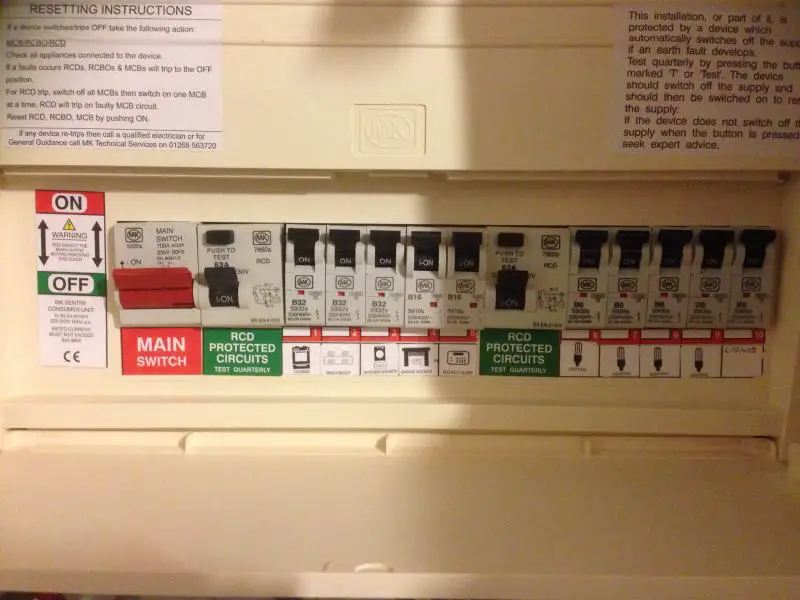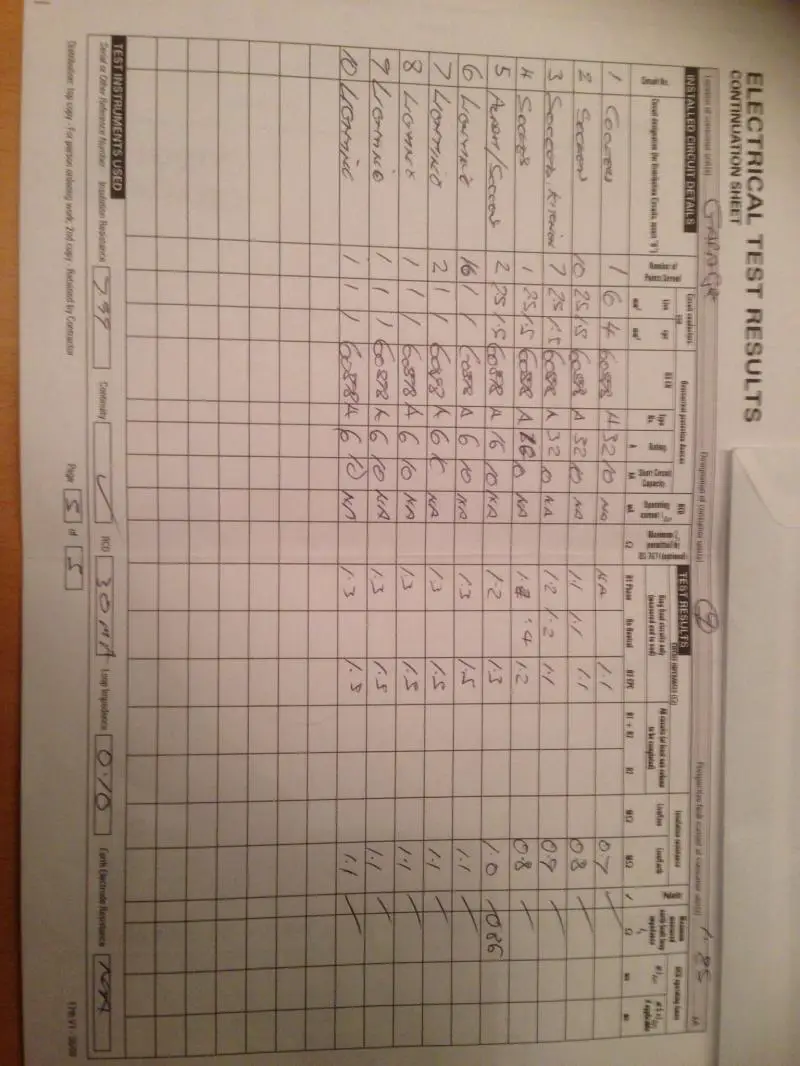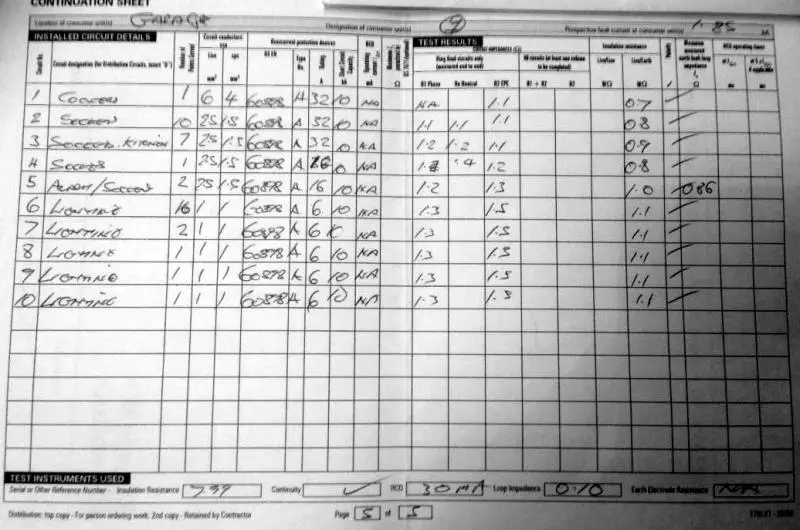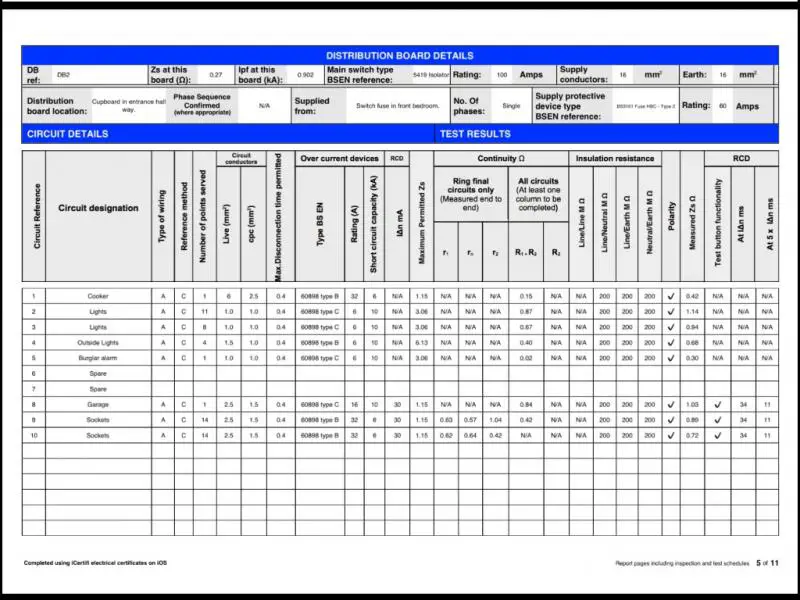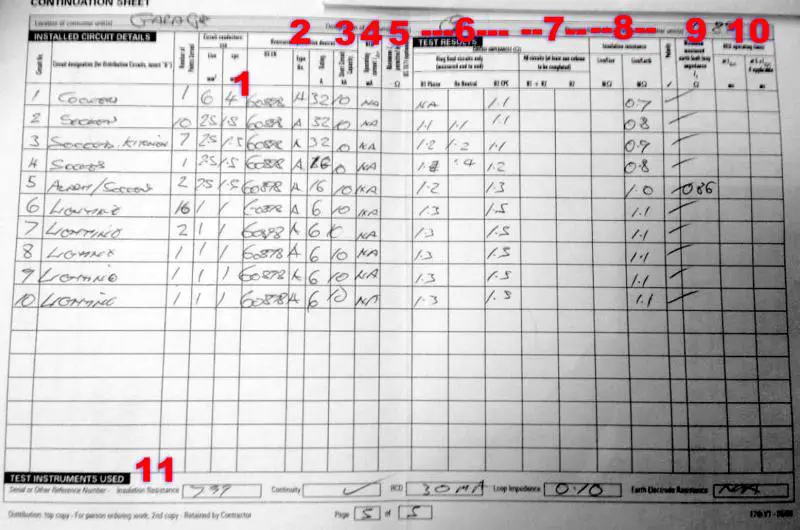I had a new CU put in by an electrician about 12 months ago.
All fine with it, but I've found using my chop saw in the garage causes the garage circuit MCB to trip. All other appliances in there are fine.
If I run an extension from the ring main to either the ring covering the remainder of the house, or the kitchen ring (they are separate) then it works fine.
I've had a closer look at the CU and the garage (& conservatory) circuit is protected by only a 16A device, rather than 32A on the other two circuits.
The garage/conservatory circuit looks to 2.5mm T&E also.
It seems quite a hefty motor in the saw, so was thinking just to switch the MCB on the garage/conservatory for a 32A device.
The MK CU came from screwfix, so was wondering if the following would be appropriate?
http://www.screwfix.com/p/mk-sentry-32a-type-c-mcb/40707
Type C looks the same as the existing ones with MK brand just under the switch.
The MK kit (10 way, dual RCD) seems to come with 1x40A, 4x32A, 5x6A, so a bit surprised I've got 3x32A and 2x16A - unless maybe the spec changed from a year ago maybe?
All fine with it, but I've found using my chop saw in the garage causes the garage circuit MCB to trip. All other appliances in there are fine.
If I run an extension from the ring main to either the ring covering the remainder of the house, or the kitchen ring (they are separate) then it works fine.
I've had a closer look at the CU and the garage (& conservatory) circuit is protected by only a 16A device, rather than 32A on the other two circuits.
The garage/conservatory circuit looks to 2.5mm T&E also.
It seems quite a hefty motor in the saw, so was thinking just to switch the MCB on the garage/conservatory for a 32A device.
The MK CU came from screwfix, so was wondering if the following would be appropriate?
http://www.screwfix.com/p/mk-sentry-32a-type-c-mcb/40707
Type C looks the same as the existing ones with MK brand just under the switch.
The MK kit (10 way, dual RCD) seems to come with 1x40A, 4x32A, 5x6A, so a bit surprised I've got 3x32A and 2x16A - unless maybe the spec changed from a year ago maybe?


